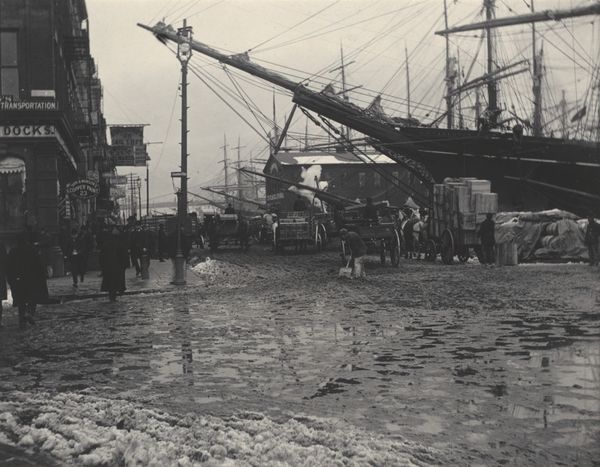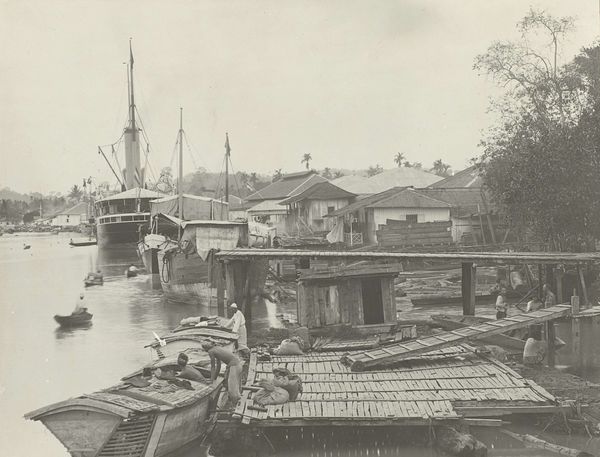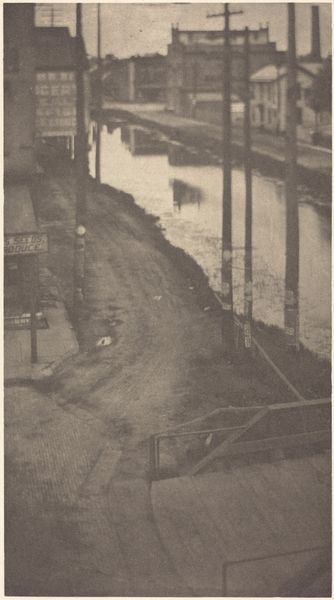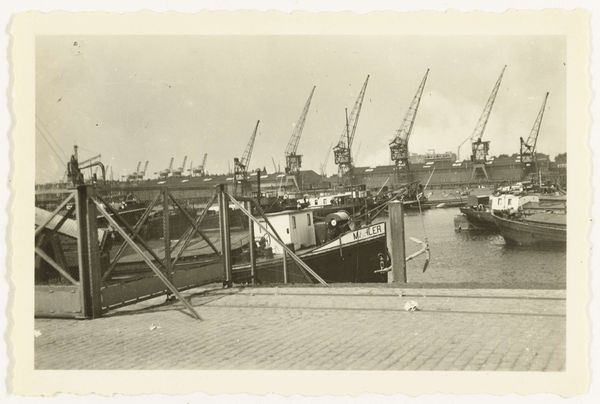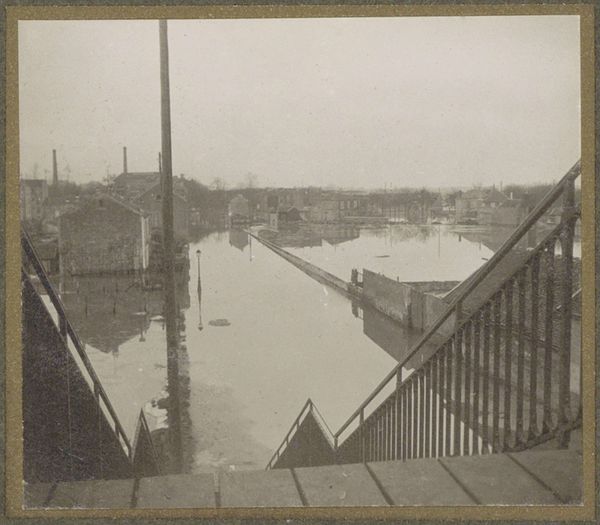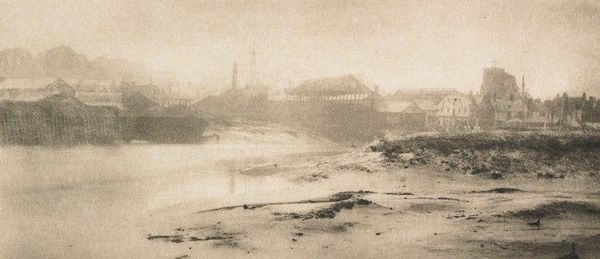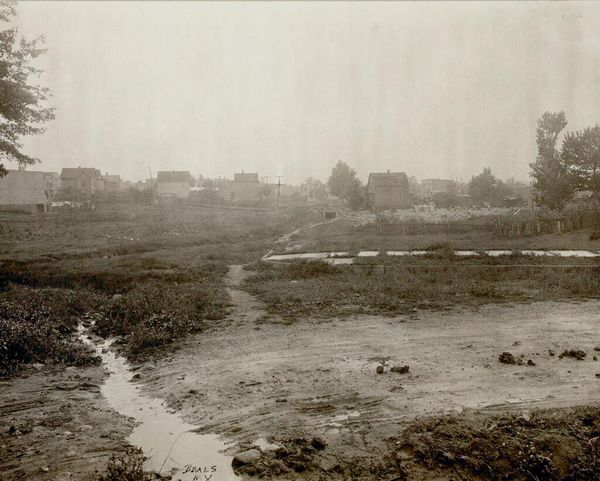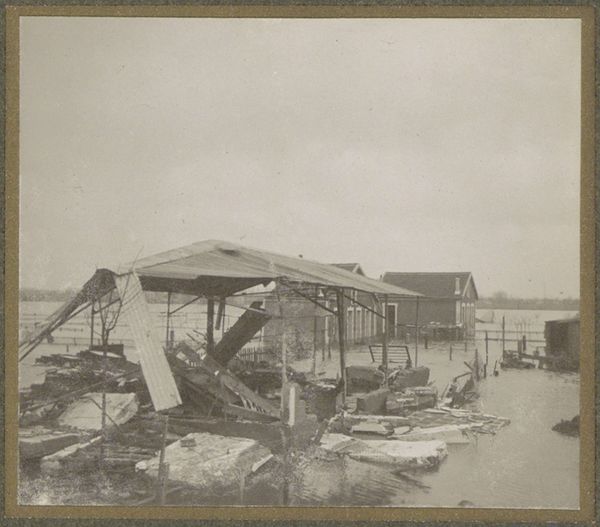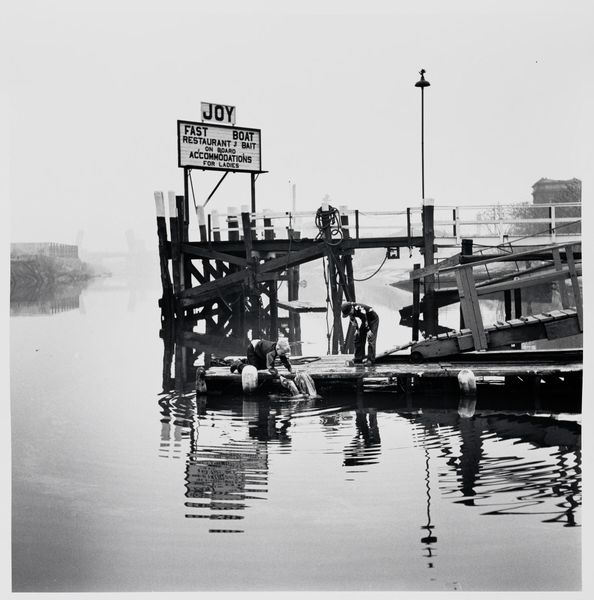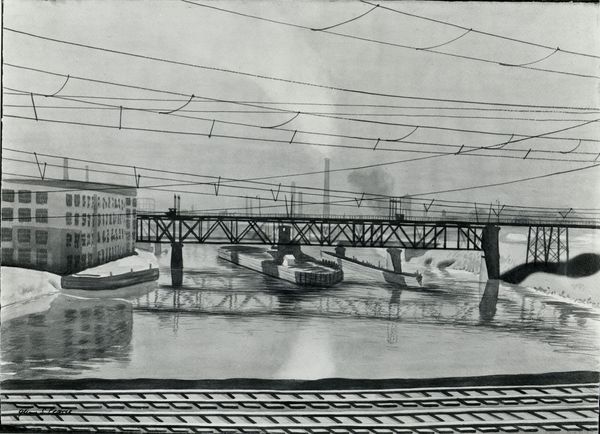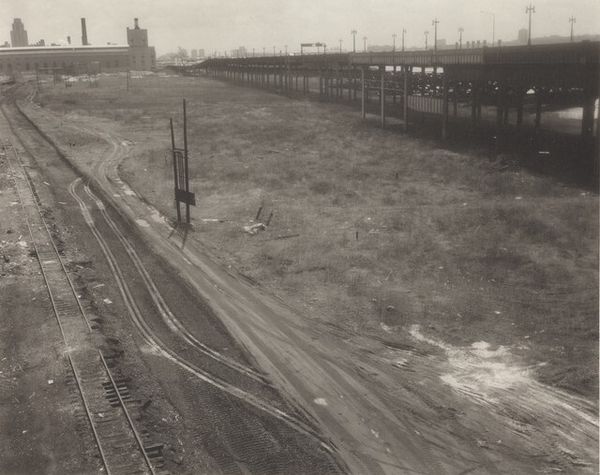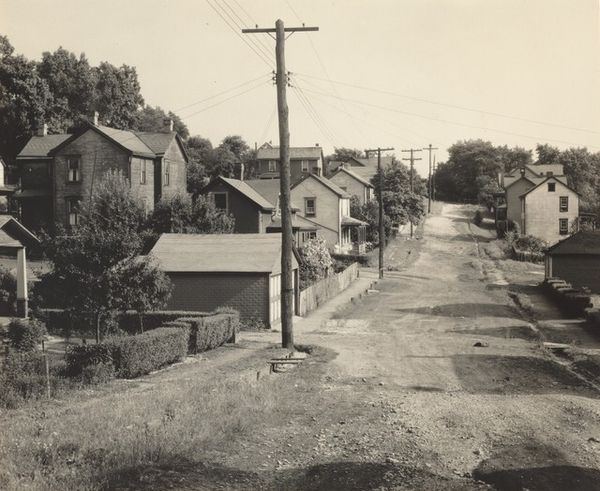
photography
#
black and white photography
#
landscape
#
outdoor photograph
#
street-photography
#
photography
#
constructionism
#
monochrome photography
#
outdoor activity
#
monochrome
#
realism
Dimensions: image: 19.2 x 24.2 cm (7 9/16 x 9 1/2 in.) sheet: 36.4 x 36.3 cm (14 5/16 x 14 5/16 in.)
Copyright: National Gallery of Art: CC0 1.0
Curator: The immediate impression is stark, a little bleak. There's something incredibly melancholic about this street scene, with its muted tones and the lingering puddles reflecting a world under construction, or perhaps, deconstruction. Editor: Indeed. This is Madoka Takagi’s 1990 black and white photograph, "Corona Queens". The photograph documents a streetscape in the Corona neighborhood of Queens, New York. I think that you touched upon key qualities inherent in documentary photography. Curator: Beyond the simple recording of a place, I’m struck by what seems like a palpable sense of neglect and perhaps abandonment. Even the high-rise cranes in the background feel somehow… defeated. How does Takagi engage with the public role of imagery here? Editor: Well, during that period, New York City faced significant social and economic challenges. It serves as a critical visual document of a specific socio-economic moment. Takagi draws attention to urban spaces often overlooked or misrepresented in mainstream media. It's also important to consider how images like these contributed to discussions around urban planning, resource allocation, and the lived experiences of marginalized communities. The very act of documenting is, of course, a political statement. Curator: The composition is masterful, drawing the eye along the muddy street, littered with debris, toward a vanishing point somewhere between those skeletal cranes. It's not just a photograph, but a statement. The lack of human presence only amplifies the feeling. Is it a critique? An observation? Or something else entirely? Does the title "Corona Queens" reinforce the feeling of the majestic laid low by hardship, a once proud territory perhaps impacted by societal problems? Editor: That reading seems right. There's an ambiguity that avoids simple pronouncements. Perhaps, in foregrounding the often unseen reality, Takagi invites viewers to critically consider the power structures that have contributed to it. The composition echoes back to practices in constructionism that were concerned with political activism. The artist highlights social issues to try to improve lived experience for communities that face discrimination and marginalization. Curator: Ultimately, I find myself questioning my own position as a viewer – what am I doing looking at someone else's hardship frozen in monochrome? Is this image intended as a mirror, forcing a privileged viewer to examine his or her complicity? Editor: Yes. That's where its power lies, isn't it? The capacity of art to implicate us, to challenge us to look beyond the frame and question the world around us, is profound. This photograph encapsulates that potential beautifully.
Comments
No comments
Be the first to comment and join the conversation on the ultimate creative platform.
